TOKYO (NewsCore) - UPDATES:
- The tsunami carried away a ship with 100 people on board,
Miyagi police told news agency Kyodo News.
- US President Barack Obama offered his condolences and
America's help to Japan
- Japan declared a nuclear emergency they were unable to pump
water to cool the nuclear reactor
- There are over 1,000,000 people without power
---------------
A massive 8.9-magnitude earthquake off Japan's northeastern coast
triggered Pacific-wide tsunami alerts in at least 19 countries, as
US authorities put the entire west coast on alert Friday.
Whole towns in Japan's north were swamped by a wall of water by
the 33-foot (10-meter) tsunami that slammed into the nation's
Pacific coast following the offshore quake.
The quake was the biggest earthquake in Japan since records
began, eclipsing the 7.9-magnitude Great Kanto Earthquake that
devastated Tokyo in 1923, and the 6.8-magnitude quake that hit Kobe
in 1996. The quake was the world's seventh largest on record,
according to the US Geological Survey (USGS).
As the tsunami swept across the Pacific, warning sirens blasted
across Hawaii with the first waves expected to hit around 2:55am
local time (7:55am ET). John Cummings of the Honolulu Department of
Emergency Management said, "This looks like this will be a very
serious event."
The Pacific Tsunami Warning Center, based in Ewa Beach, west of
Honolulu, issued a widespread warning extending across virtually the
entire Pacific Ocean, including Australia, Antarctica and South
America. Hawaii is some 4,000 miles east of the epicenter of
Friday's earthquake.
The Hawaii warning was closely followed by warnings issued across
California, Oregon, Washington and Alaska.
The Tsunami Warning Center in Alaska reported that the warning
was in effect from Point Concepcion in central California to the
Oregon-Washington border and parts of southern Alaska.
The Philippine government also strongly urged residents of its
Pacific coast to "go farther inland" to escape the tsunami threat,
AFP reported.
"People whose houses are very near coastal areas facing the
Pacific Ocean are strongly advised to go farther inland," the
National Disaster Risk Reduction and Management Council said in a
bulletin.
The Red Cross reported that the height of the tsunami was higher
than some Pacific islands.
The quake struck about 237 miles (382 kilometers) northeast of
Tokyo, the USGS said, at a depth of 15.2 miles (24.4km). Another
quake struck only minutes after the first.
Live television pictures showed water engulfing coastal areas of
the Miyagi prefecture, in the northeast of the country, 200 miles
(320 kilometers) from capital Tokyo, washing away houses, buildings
and other structures in its path.
People in the region were forced to flee to safety on any point
of high ground they could find. The area's Sendai airport was
completely underwater.
Belly-up ships, twisted cars and debris from shattered buildings
crashed through the streets of Japanese port towns. A muddy river
filled with rubble -- some of it on fire and belching smoke -- raced
across rice fields and through towns, aerial television footage
showed in one of the worst-hit areas, Miyagi prefecture.
Amid the devastaton, a fire broke out at a nuclear power plant in
Onagawa, a town of northeastern Japan, although authorities said
there was no escape of radioactive material.
Japanese Prime Minister Naoto Kan urged people to remain calm
amid the tragedy. Kan added that no radiation leaks were detected
from the country's nuclear power stations in the wake of the
tsunami.
"I ask the people to act calmly while listening carefully to
information from radio and TV," he said. "We should all help each
other to minimize the damage."
At least 26 people were initially reported killed, however the
death toll is expected to rise dramatically.
The UN said it had 30 rescue teams on standby to assist in the
rescue mission.
The tremor lasted around four or five minutes, witnesses said,
with powerful aftershocks continuing for hours.
Defense force aircraft were dispatched to check quake damage
while naval vessels were sent to Miyagi prefecture.
Around 20 percent of the world's most powerful earthquakes strike
Japan, which sits on the "Ring of Fire" surrounding the Pacific
Ocean.
Friday's quake was a reminder of the 9.1-magnitude quake which
hit off Indonesia in 2004, unleashing a massive tsunami that
devastated coastlines in countries around the Indian Ocean as far
away as Africa. More than 220,000 people were killed.
It also comes only weeks after New Zealand's Christchurch was hit
by a 6.3 magnitude quake which killed at least 166 people and
destroyed much of the city.
JAPAN: 11:39 p.m. (JST) /
9:39 a.m. (ET), Friday
Visitors evacuated from Tokyo Disneyland
Tokyo Disneyland's car park was
drenched with water-logged segments from the ground following
the earthquake that rocked Japan's Pacific coast Friday, police told
AFP.
Police said the phenomenon was due to liquefaction of soil caused
by the intense shaking of the tremor, not a result of the tsunami.
There were 69,000 people at Tokyo Disneyland and the neighboring
Tokyo Disney Sea when the quake occurred, a spokesman at the local
Urawa police station told AFP. There were no injuries or property
damage reported at the theme parks.
"The visitors have been evacuated to safe places, but there are
many puddles due to liquefaction around the theme parks," he said.
Here's an image from Twitter, reportedly of
visitors waiting at the park
after the quake
JAPAN: 11:33 p.m. (JST) /
9:33 a.m. (ET), Friday
The Washington Post's Chico Harlan reports on the earthquake from
Hiroshima, Japan. WATCH:
JAPAN: 11:28 p.m. (JST) /
9:28 a.m. (ET), Friday
Tsunami wave hits Japan's main airport
A tsunami wave hit also wiped out Japan's main Sendai Airport, as
a wave of debris crashed through. WATCH:
See a picture of people watching the wave approach
here.
JAPAN: 10:59 p.m. (JST) / 8:59
a.m. (ET), Friday
U.S. coast braces for possible tsunami impact
The tsunami that caused a massive earthquake in Japan is now
crossing the Pacific Ocean. The U.S. National Weather Service has
issued a warning for at least 50
countries or territories around the Pacific and the U.S. coast is
now bracing for the impact of the waves.
Tsunami waves
began
rolling into Hawaii, with readings of between 6 and 8 feet
expected in some areas, CNN reported. The first impact in Hawaii was
felt shortly after 3:07 a.m. local time (8:07 a.m. ET), according to
Hawaii State Civil Defense, which issued a tsunami warning, followed
by an increase in water coming ashore.
Honolulu is planning for several contingencies, because it is not
certain how large the waves could be and where they may rush inland,
Mayor Peter Carlisle told CNN. The Coast Guard is preparing for the
worst-case scenario.
On the
Oregon coast, sirens are urging people to seek higher ground.
Information indicated a wave of more than 6 feet could reach
Brookings in southern Oregon, while a wave of about 4 1/2 feet was
predicted for northern Oregon's Clatsop spit. The waves are expected
between 7 a.m. and 8 a.m.
In Alaska, the Alaska Emergency Management says the
tsunami caused a wave just over 5 feet at Shemya and about 18
inches at Adak and Dutch Harbor in the Aleutian Islands. Shemya is
1,200 miles southwest of Anchorage.
Communities along much of the U.S. West Coast are under tsunami
warnings. Read Tsunami warnings
from the National Weather Service.
JAPAN: 10:59 p.m. (JST) / 8:58
a.m. (ET), Friday
Tsunami waves across the Pacific
This map shows a projection of tsunami waves across the Pacific,
courtesy of Joe Weisenthal at
Business Insider:
JAPAN: 9:30 p.m. (JST) / 7:31
a.m. (ET), Friday
Earthquake hits Japan
Japan was struck with a massive 8.9-magnitude earthquake and
several aftershocks Friday afternoon. Washington Post reporter Chico
Harlan
reported from Japan:
The first earthquake struck at 2:46 p.m. local time (12:46 a.m.
in Washington), causing buildings to sway in Tokyo for several
minutes.
According to the U.S. Geological Survey, the largest initial
earthquake struck at a depth of about six miles, about 80 miles
off the coast east of Miyagi Prefecture, a mostly rural but
still densely populated part of Honshu, Japan's largest island.
Tokyo -- which is also on Honshu and about 230 miles south of
the epicenter -- appeared to escape substantial damage, though
some fires were reported and buildings shook violently during
the initial quake.
AP
reported there were "no reports of injuries to American
personnel there or damage to U.S. installations or ships in the
area."
JAPAN: 9:30 p.m. (JST) /
7:31 a.m. (ET), Friday
Audio report from Hiroshima
Harlan called in this audio report from Hiroshima. He had been
getting ready to board a bullet train when the train was delayed by
several minutes, which was a "really unusual occurrence." Harlan
tells of thousands of train passengers who went silent, looking at
images of cars and houses like driftwood washing away. LISTEN:
JAPAN: 9:15 p.m. (JST) /
7:15 a.m. (ET), Friday
Live video of the quake
Watch video of the live quake here:
As of 16:11 UTC: At least 200 people have been
killed in a massive earthquake in Japan that also triggered a
devastating
tsunami. The quake - the most powerful to hit Japan in at
least 100 years - caused massive damage and many people are missing
and feared dead.
Tsunami Waves Force Evacuations In
Hawaii
UPDATE 7:50 a.m. PST: According to the L.A. Times.
authorities and local reports say that the waves have
so far been only a foot higher than normal. However,
authorites have warned that more tsunami waves are expected
to hit ths state.
UPDATE 5:30 a.m. PST: CNN is reporting that
tsunami waves are hitting Hawaii.
Evacuations are underway in Hawaii amid tsunami fears
following a magnitude 8.9 earthquake that struck Friday in
Japan.
The tsunami waves in Hawaii were expected to hit around
or after 3:00 a.m. local time. The waves, which could be as
high as six feet, are expected to reach the island of Kauai
first.
Hawaiian officials are telling residents and tourists to
get out of the coastal areas and head for higher ground. The
tourist hub of Waikiki Beach in Oahu is among the areas
under evacuation.
CNN reported:
The first impact in Hawaii may be felt around 3:07
a.m. local time (8:07 a.m. ET), according to Hawaii
State Civil Defense, which issued a tsunami warning.
Honolulu is planning for several contingencies,
because it is not certain how large the waves could be
and where they may rush inland, Mayor Peter Carlisle
told CNN.
"It is a very difficult situation to confront,"
Carlisle said.
Hawaiian Public Radio news director Bill Dorman
told CNN some roads were closed as a precaution. CNN
meteorologist Rob Marciano said he expected the waves to
first strike the island of Kauai.
Honolulu Department of Emergency Management spokesman
John M. Cummings III said authorities were taking the
warning "very, very seriously." "Anyone in the shoreline
areas should get out now,"
Cummings said.
Warning sirens have been ringing every hour in Hawaii
since they began 10 p.m. local time.
The Los Angeles Times reported: "Pacific Tsunami Warning
Center officials warned that 'urgent action should be taken
to protect lives and property. Tsunami waves effectively
wrap around islands. All shores are at risk no matter which
direction they face.'"
At least 50 countries have issued tsunami warnings.
The tsunami is expected to hit various locations up and
down the West Coast on Friday morning. Fox News reported
Orange County is closing its beach at 5 a.m. local time in
preparation.
According to Fox News: "At roughly 8 a.m. ET – automated
calls will be going into the homes along the beach
communities where officials anticipate some impact from the
tsunami.
"Officials tell Fox News, they anticipate a surge in
Orange County of about two feet."
Fox News also reported that fire officials in Los Angeles
County told them they are
not going to close the local area beaches and do not
expect any evacuations.
Japanese Earthquake Death Toll Reaches 1,300
By Helena Zhu
Epoch Times Staff
Created: Mar 12, 2011
Last Updated: Mar 12, 2011
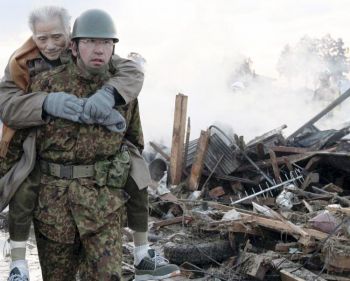
A soldier carries an
elderly man on his back to a
shelter in Natori city, Miyagi
prefecture on March 12. Authorities warned a
meltdown may be under way at a nuclear plant
after a monster tsunami devastated a swathe
of
northeast Japan. (STR/AFP/Getty
Images)
A day after Japan’s strongest earthquake on record hit
the island nation’s east coast on Friday afternoon, the
death toll has reached 1,300.
The magnitude 8.9 earthquake and ensuing aftershocks
collapsed buildings, ignited fires, cut out electricity,
shut down airports and trains, and unleashed a tsunami
that swept boats, and houses miles inland. But that is
only the beginning.
Japan’s Nuclear and Industrial Safety Agency said that a
reactor in the Dai-Ichi power plant in Fukushima may be
starting to melt down. The government ordered residents
within 6 miles (10 km) to evacuate immediately.
“If the fuel rods are melting and this continues, a
reactor meltdown is possible,” Yuji Kakizaki, an agency
spokesman, told Bloomberg after cesium, a radioactive
material left by atomic fission, was detected around the
Dai-Ichi No. 1 reactor.
More than 700 people are reported missing, and an
estimated 4,000 are stuck in
evacuation centers in Sendai on Honshu island, 80
miles west of the epicenter. Without food,
water, or heat, those at evacuation centers are
waiting for helicopter rescue.
Throughout the country, 77,300 people are in 594
evacuation centers in 40 municipalities.
Australian researcher Dr. Qiwen Yao was at work at the
National Institute for Materials Science in Tsukuba,
Ibaraki when the earthquake shook at 2:46 p.m. local
time (12:45 a.m. EST). At 203 miles away from the
epicenter, Yao lost his electricity and phone connection
just minutes after the shake.
“The building started shaking and it was not easy to
find balance because of the earthquake,” Yao recounted
in a phone interview on Saturday morning. “Many people
came out from the building, and later on we found that
laboratory equipments have fallen everywhere.”
There have been at least 154 aftershocks, mainly off the
east coast, at 6:30 p.m. on Saturday, March 12. Dave
Applegate, a senior adviser at the U.S. Geological
Survey said that the aftershocks will continue
for “not just days, weeks, but months and potentially
years,” Bloomberg reported.
“After the earthquake, aftershocks have been happening
every few minutes,” said Yao. “The earth had been
shaking until early this morning, the frequency has
gradually slowed down since then. It has almost calm
down by now, but there is no electricity and it is dark
everywhere except a few buildings that have backup
power.”
As of 7 p.m. Saturday, eight people are dead in Tsukuba,
four are suffering from cardiopulmonary arrest, and 13
are severely injured. Across the city, 26 houses were
destroyed, six partially wrecked, 1,400 are slightly
damaged, and 2,004 are partially under water, according
to the government of Tsukuba's website.
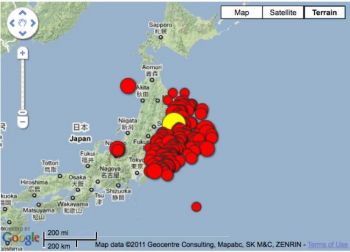
A map showing the magnitude 8.9 earthquake that
shook Japan on March 10 (yellow) and the series
of aftershocks (red). (USGS)
Prior to the earthquake, Yao and his colleagues were
trained to evacuate to a nearby primary school for
temporary refuge. For Yao, the well-built Japanese
schools were a sharp contrast to the schools that
collapsed instantly when a magnitude 7.9 earthquake hit
Sichuan, China, in 2008.
“Yesterday afternoon when I walked passed the primary
school, it made me think of the earthquake that happened
in China," he said. "What happened was that primary
school buildings were the first to fall down, and the
government buildings did not fall down. But here in
Japan, primary schools are made the strongest. … there’s
an interesting contrast there.”
At least 87,587 people were killed and 374,177 were
injured in the Sichuan earthquake. An estimated 5.36
million buildings collapsed, and more than 21 million
buildings were damaged in Sichuan, according to USGS.
Many Chinese parents protested for months after finding
their children buried under poorly built schools.
Yao, who arrived in Japan for work last September, said
he has never seen “anything like this before.” Although
in Japan earthquakes normally happen every few weeks
they are generally weak. “This time it is happening more
frequently and stronger," he said.
Right after the earthquake took place on Friday, Prime
Minister Naoto Kan established an emergency headquarters
in response to the disaster.
“The government will make every possible effort to
ensure the safety of the public and keep damage to the
minimum possible extent,” Kan said in an official
statement. “I extend my heartfelt sympathy to those who
have suffered.”
After coming back from an inspection of the devastated
area around Sendai, Kan said he would mobilize 50,000
Self Defense Force personnel to aid the relief effort.
After waking up to the news on the other side of the
globe, President Barack Obama and first lady Michelle
Obama sent their “deepest condolences” to the Japanese,
“particularly those who have lost loved ones in the
earthquake and tsunamis.”
“Today’s events remind us of just how fragile life can
be," said Obama in a press conference. "Our hearts go
out to our friends in Japan and across the region and
we’re going to stand with them as they recover and
rebuild from this tragedy."
The U.S. Agency for International Development deployed
two Urban Search and Rescue teams on Friday at the
request of the Japanese government. The teams consist of
70 cross-trained personnel using sniffer dogs, according
to the Federal Emergency Management Agency.
Nuclear power plant in Japan explodes
2011/03/13 20:09:40 |
One major aftermath of the
magnitude 9.0 earthquake and tsunami that hit Japan was
the explosion of the Fukushima nuclear power plant in
northeastern Honshu Saturday afternoon in which three
people were injured.
All major Taiwanese newspapers covered the event
extensively, as Taiwan itself has three operating
nuclear power plants and is building a fourth and is
highly vulnerable to earthquakes.
The following are excerpts of local media coverage of
the incident:
China Times:
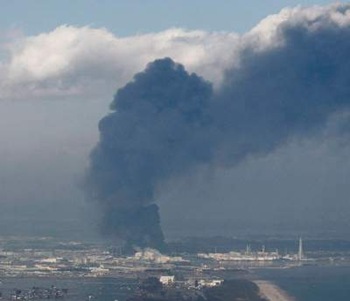
http://www.youtube.com/watch?v=pIZKlaEZMLY
BIDEO OF EXPLOSION
Experts were worried the explosion and the leaking of
radioactive substances from the Japanese nuclear power
plant could be the first evidence of a "nuclear
meltdown." Three people were confirmed injured in the
incident and nearly 100 were suspected of having been
contaminated by radiation.
The Japanese prime minister has ordered an evacuation of
80,000 people living nearby. Iodine has been distributed
to local residents to help block the absorption of
radioactive substances.
Power plant workers injected cooling water into the No.
1 reactor but the water level kept falling, leaving the
container of the fuel rod 1.7 meters above the cooling
water. But a Tokyo university professor said the reactor
had stopped operating and there was no need for panic.
However, Japanese media reported that the radioactive
leakage might have contaminated as many as 190 people,
including 90 who were working at the site of the
explosion and scores of others at a nearby high school
campus.
The Japanese government said the explosion was caused by
the collapse of walls in the power plant, not the
destruction of the "safety shell" or container of the
nuclear reactors. It gave assurances that radioactive
substances would not leak in great amounts.
The government advised people living in the area to shut
their windows and not use air conditioners or expose
their skin when dressing. People were also told to eat
only food that had been thoroughly cleaned.
Could the leaked radiation reach Taiwan?
Taiwan's Central Weather Bureau said the prevailing wind
from Japan was westerly, and polluted air particles were
mostly traveling east, meaning it would be "very
difficult" for radioactive fallout to reach Taiwan.
The Atomic Energy Council (AEC) noted that radioactivity
would decrease over the long distance from Japan to
Taiwan, so even if the polluted particles flew over
Taiwan, the hazard would be minimal.
As to the safety of Taiwan's three nuclear power plants
that are in operation, Taiwan Power Co.'s Deputy General
Manager Huang Hsien-chang said they were designed to
resist magnitude 7.0 earthquakes.
When the earthquake hit Japan, the company immediately
asked all three to launch security measures by erecting
their tidal wave-resisting gates, Huang said.
AEC Deputy Minister Shieh Der-jhy said Taiwan's nuclear
power plants were built to resist tsunamis that were up
to 12 meters high.
The latest tsunami that hit the Tokyo area brought
10-meter high waves -- a level that should not cause a
hazard to Taiwan's three nuclear power plants, he said.
But some environmental activists and |
But
some environmental activists and academics said the first and
second nuclear power plants have been confirmed to be lying on
or near seismic faults, and if tremors of similar magnitudes
were to hit Taiwan, they feared a much worse disaster might
ensue. (March 13, 2011)
The Liberty Times:
The AEC said Fukushima's radioactive
particles could reach Taiwan tonight (Sunday night) , and the
Central Weather Bureau advised the public to wear hats or use
umbrellas when going out to keep themselves from being exposed
to raindrops with radioactive material.
AEC Deputy Minister Shieh Der-jhy said the
concentration of radiation needed to be 200 mSv/hr or higher to
have an impact on humans. The radioactive level his council was
able to monitor was 0.05 mSv/hr, lower than the usual 0.1-0.2
mSv/hr.
Japanese and Russian scholars said the
current incident, being listed by Japan as "grade 4, " will not
evolve into a Chernobyl-scale calamity.
Unless a nuclear meltdown occurs, leading
to serious radiation leaks, according to experts, there should
not be concerns that local people have been exposed to long-term
cancer risks.
In Taiwan, people were worried about what
would happen if a similar incident happened to Taiwan's nuclear
power plants.
Professor Lee Min of National Tsinghua
University said no one can guarantee a risk-free design and
building of a nuclear power plant since "some unpredictable
accidents could outweigh the safety standards."
Taiwan Power Co. said Taiwan's nuclear
power plants operate fourth-generation boiling water reactors
that are more advanced than the third-generation ones used in
the Fukushima plants.
Moreover, Taipower said, each of Taiwan's
nuclear power plants are equipped with additional emergency
generators that could immediately be activated to power the
cooling systems, "increasing their reliability at least 10
times."
Shieh said that if international safety
standards are updated in the wake of Japan's Fukushima incident,
"we will follow."
As to the fourth nuclear power plant, he
said its design "should be OK, " and the screening of Taipower's
application to extend the operations of the three active plants
was continuing. (March 13, 2011)
The United Daily News:
The AEC said it would update its monitor
reports on radioactivity in Taiwan every five minutes and alert
the people to seek cover or evacuate when radioactivity reached
20 mSv/hr.
Taipower executives said the fallout from
Japan should not have a direct impact on Taiwan as radioactive
levels would decrease after being diluted in the air. "But the
fallout may pollute land or crops," they said.
The Green Citizens' Action Alliance and
other environmental groups, including the Green Party, pointed
out that all four nuclear power plants in Taiwan were located
near seismic faults and the fourth was within 80 kilometers of
an active volcano under sea.
"The authorities did not conduct a
thorough geological survey before choosing the sites for
building nuclear power plants. Once a strong quake hits, the
consequences could be beyond our imagination," said the
alliance. (March 13, 2011)
(By S.C. Chang)
17 NAVY PERSONNEL CONTAMINATED BY RADIATION
http://www.nytimes.com/2011/03/14/world/asia/14military.html?ref=asia
March 14 |
Sun Mar 13, 2011 10:50pm EDT
March 14 (Reuters) - About
2,000 bodies were found on Monday on two shores of
Miyagi prefecture in northeast
Japan following last week's massive
earthquake and tsunami, Kyodo news agency reported
3-15-11 - FUKUSHIMA, Japan —
Workers at a quake-damaged atomic power
plant suspended operations and evacuated Wednesday after a
surge in radiation made it too dangerous to remain there, dealing a
setback to Japan’s frantic efforts to stem a nuclear crisis.
"All the workers there have suspended their operations. We have
urged them to evacuate, and they have," Japan's chief cabinet
secretary, Yukio Edano said, according to a translation by NHK
television.
Edano said that a surge in radiation Wednesday morning meant
workers were unable to continue even minimal efforts at the stricken
nuclear plant.
About 45 minutes later, though, radiation levels near the plant came
back down, he said. It's possible that evaporation from reactor No.
3 may have caused the temporary surge, Edano said, although that
can't be immediately confirmed.The cabinet secretary added that
there was no need to broaden the overall evacuation radius around
the nuclear complex.
RADUATUIB NAO 0 3017011
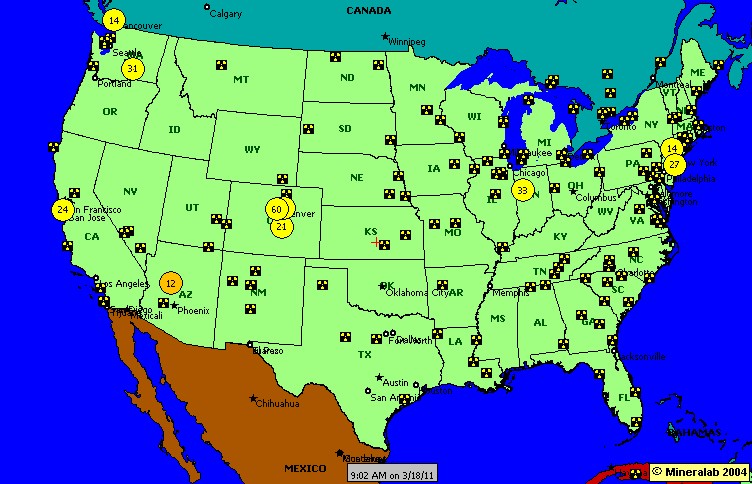 ************
************
EARTHQUAKE DATABASE ON THIS SITE
DREAMS OF THE GREAT
EARTHCHANGES - MAIN INDEX
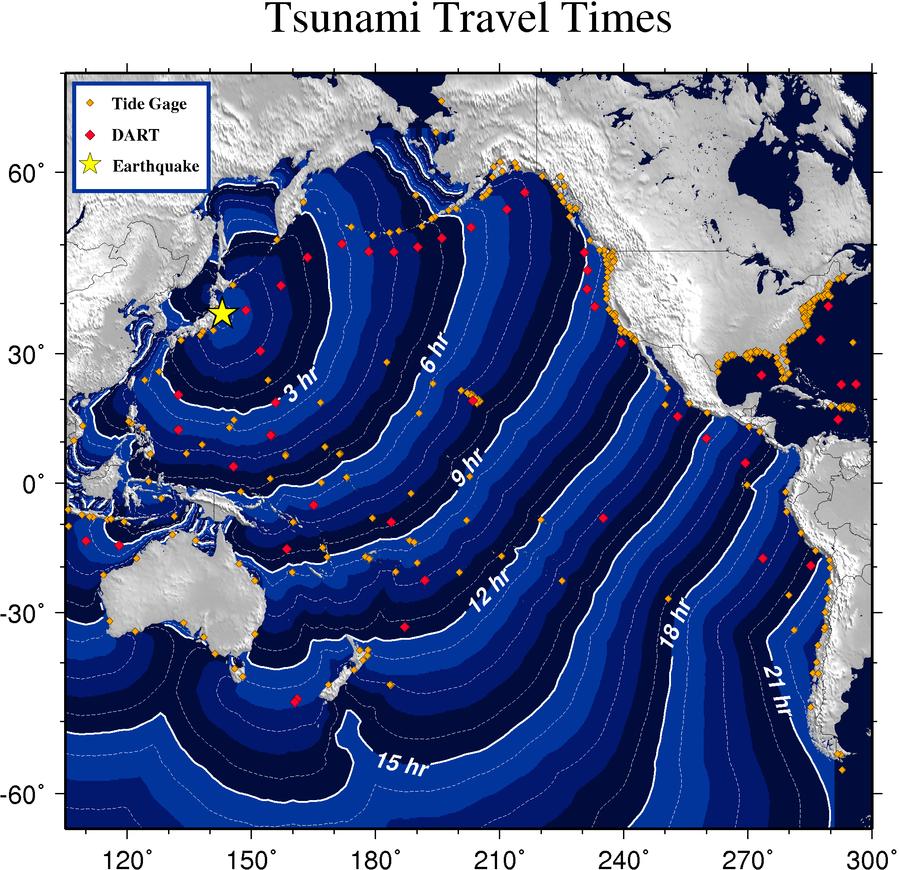
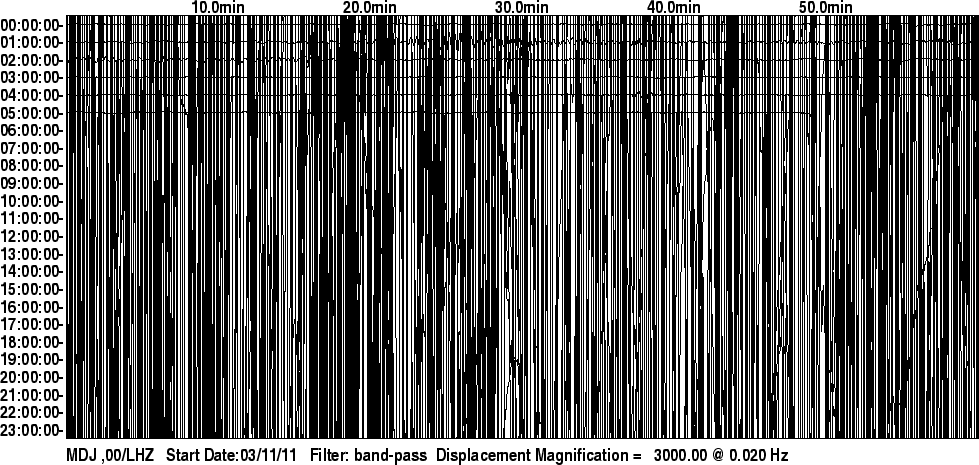
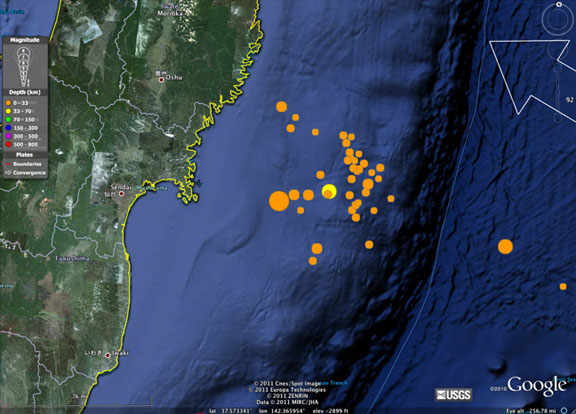
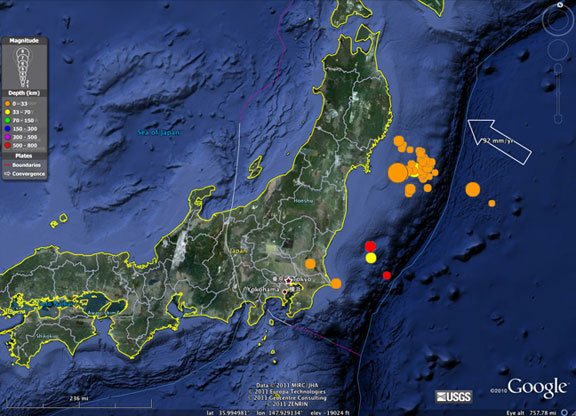
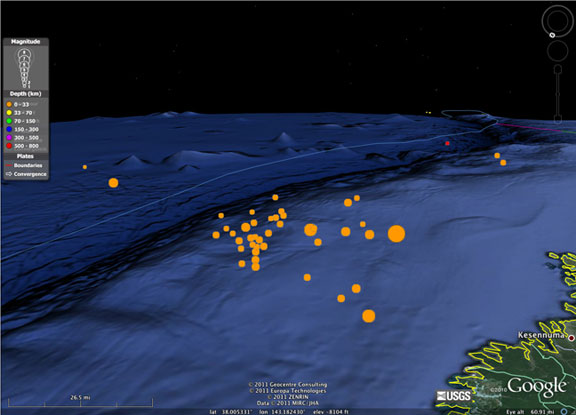
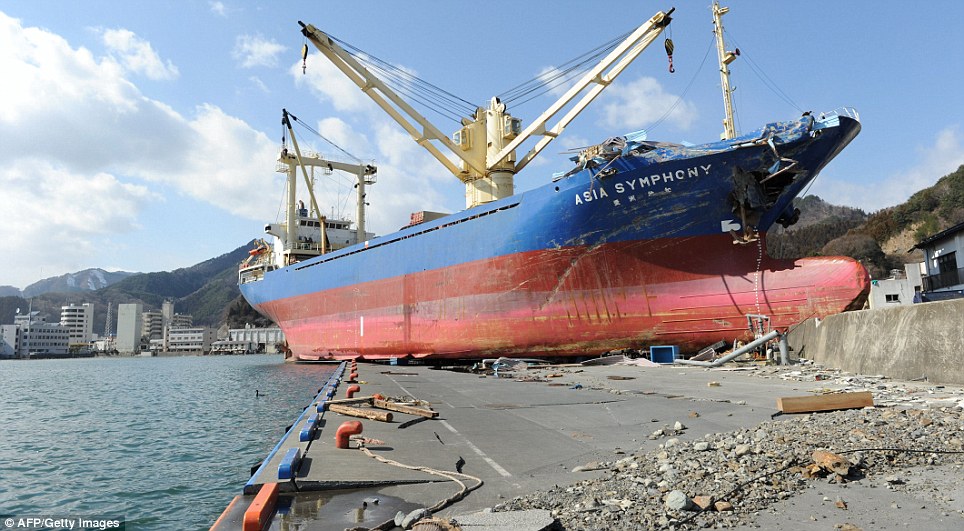
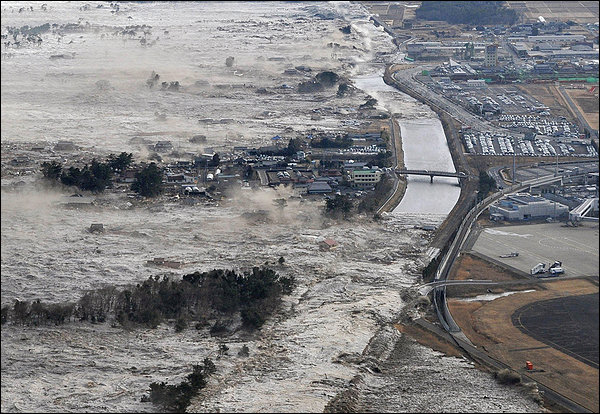
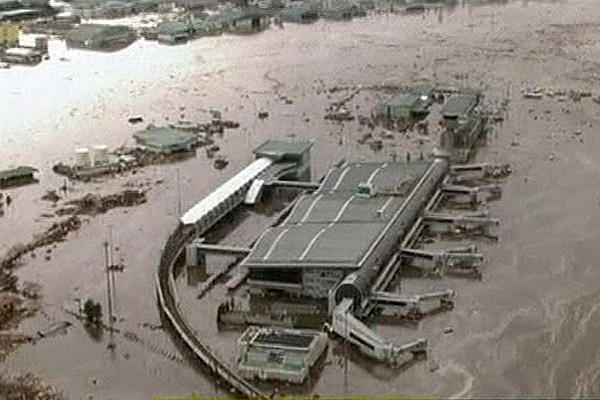
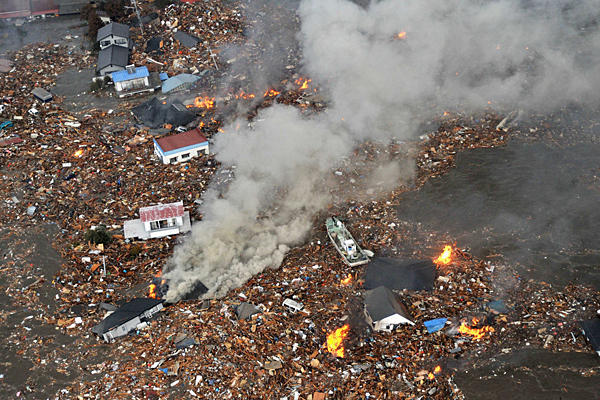
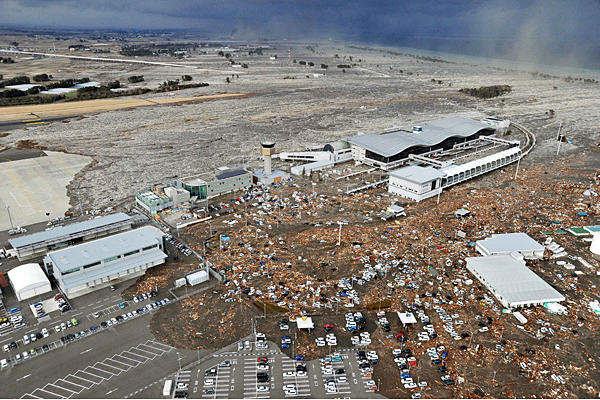
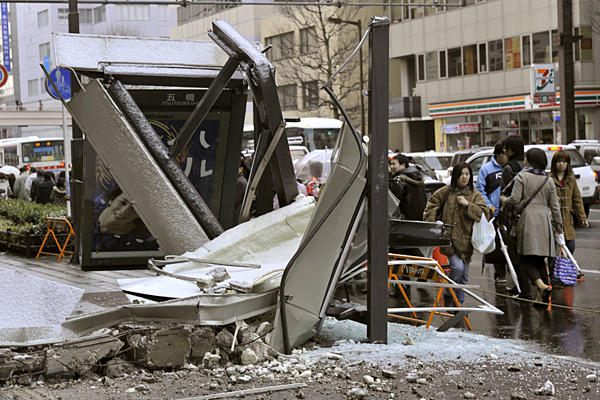
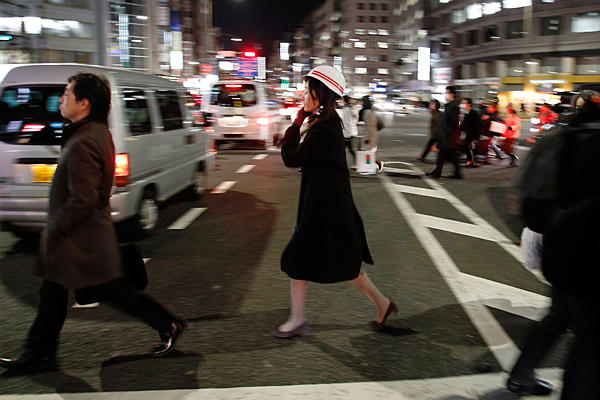
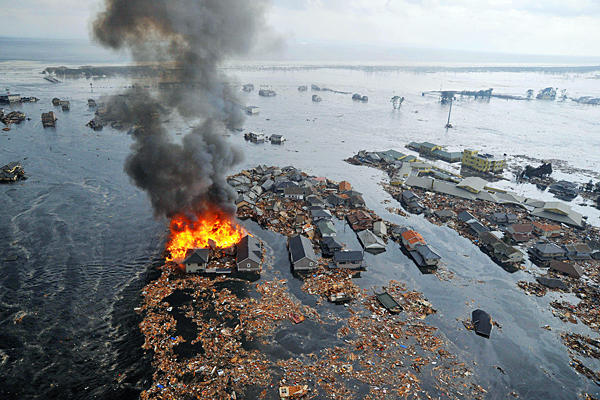
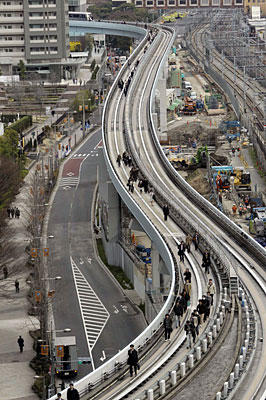
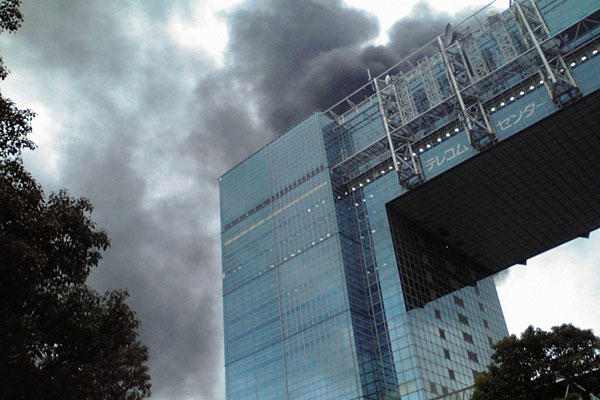
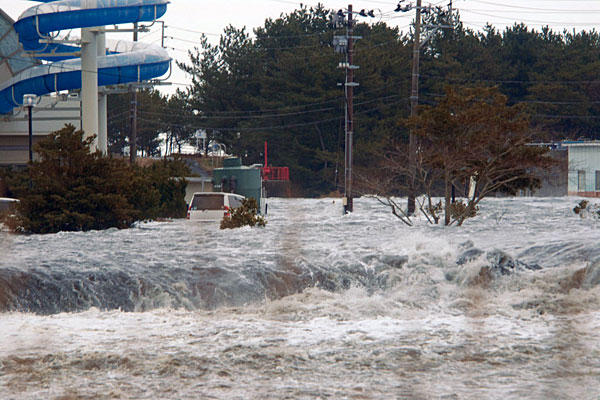
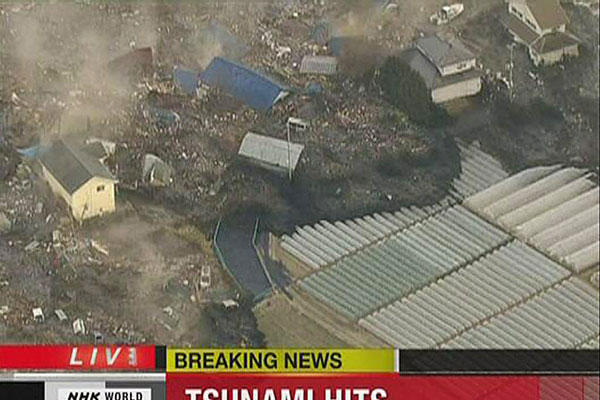
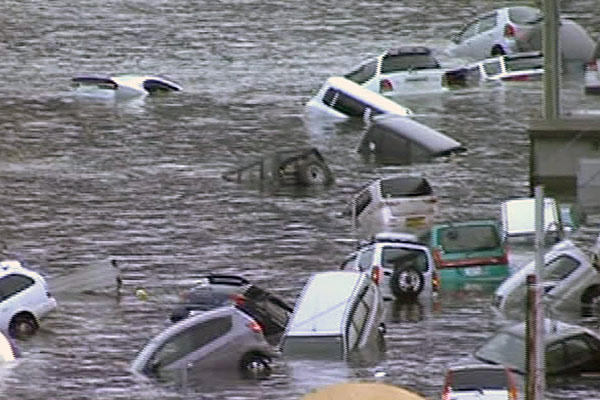
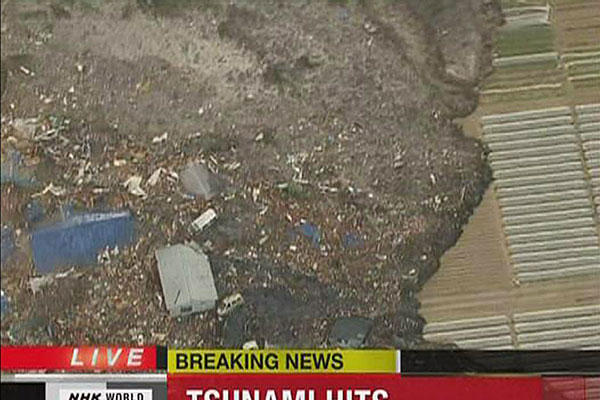
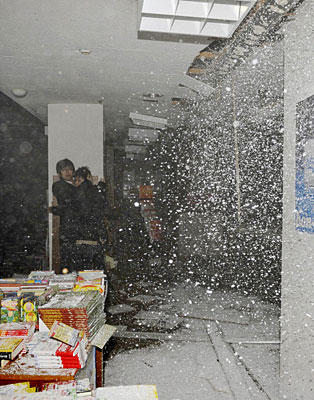
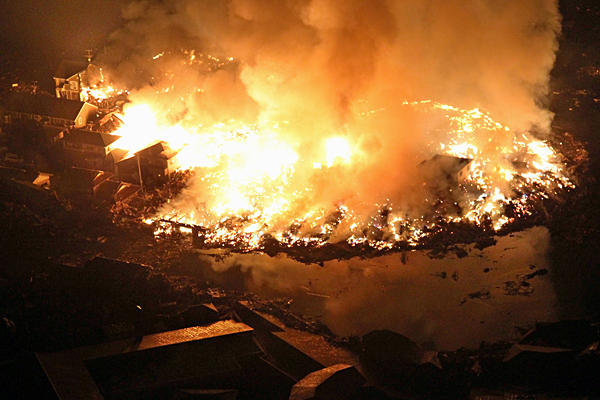
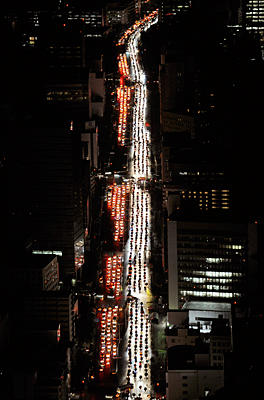
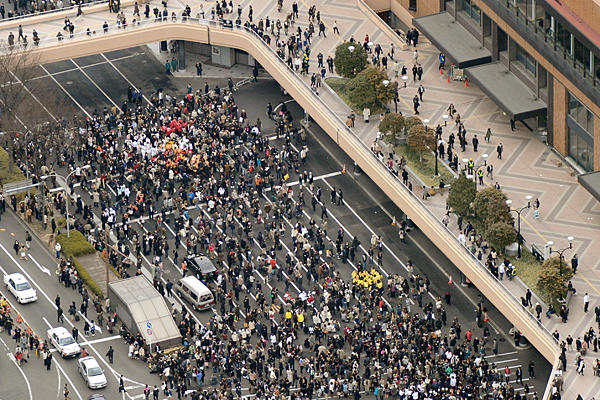
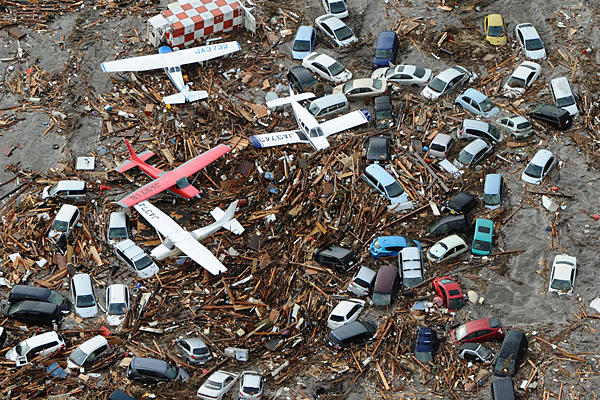
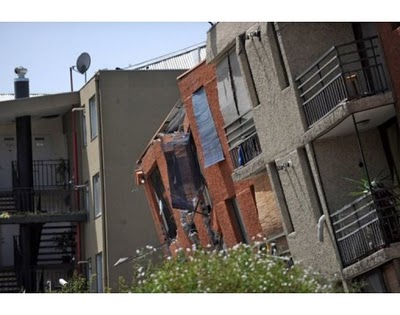

 Facebook
Facebook Digg
Digg StumbleUpon
StumbleUpon Twitter
Twitter




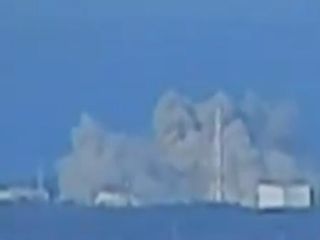

 ************
************